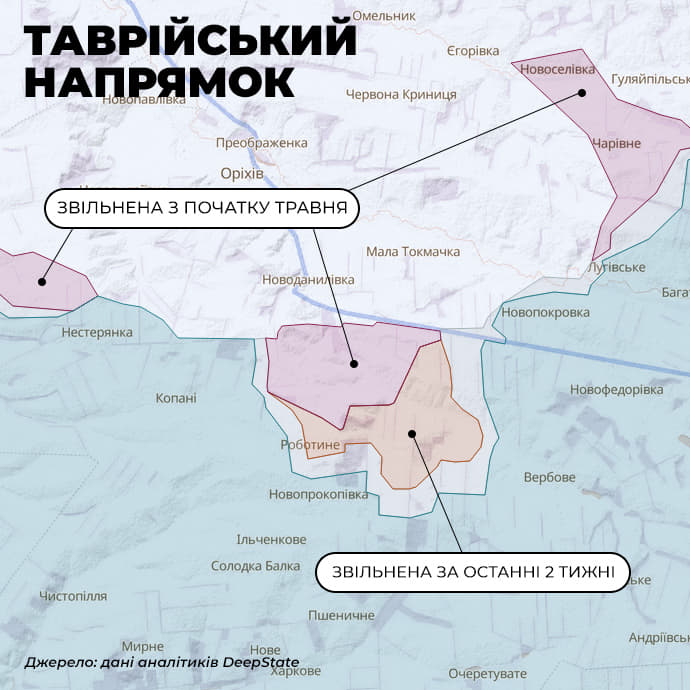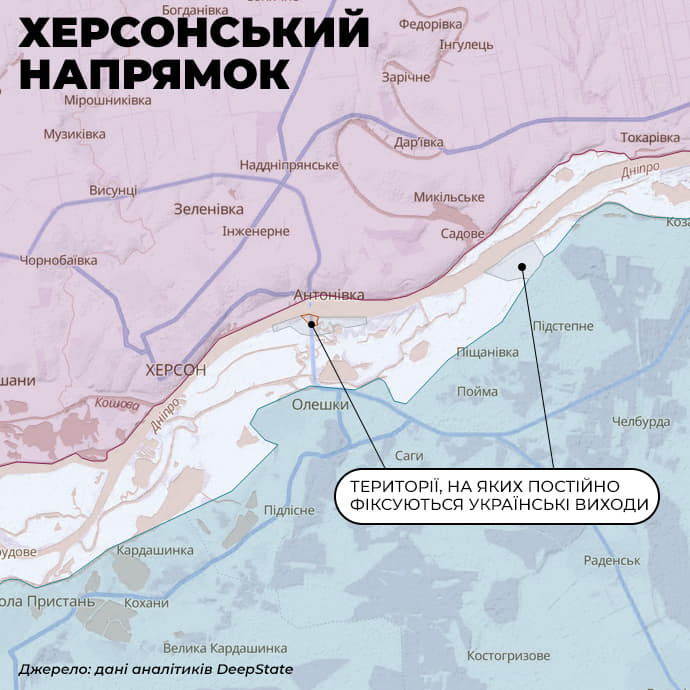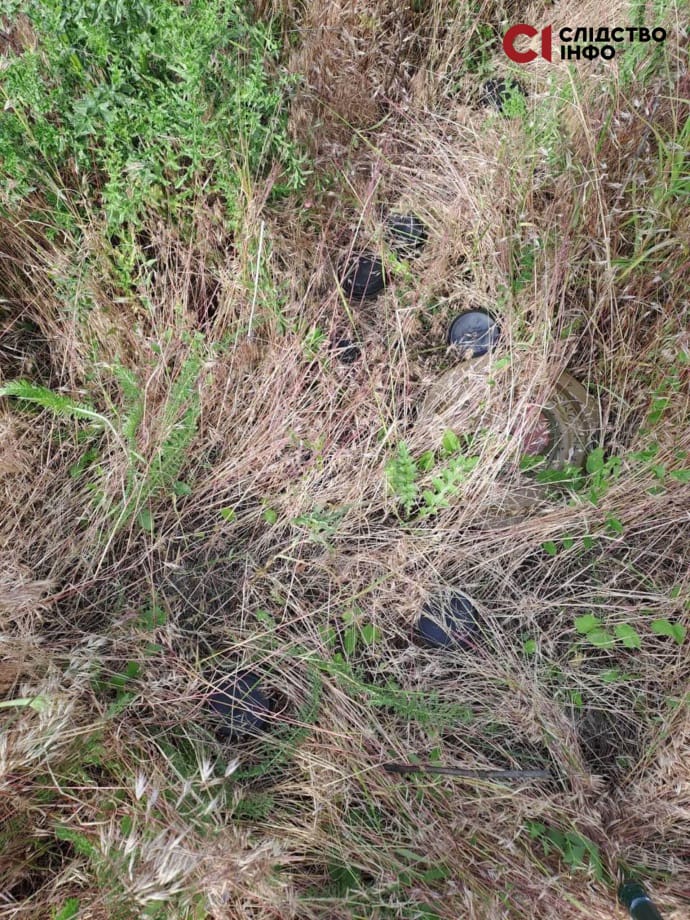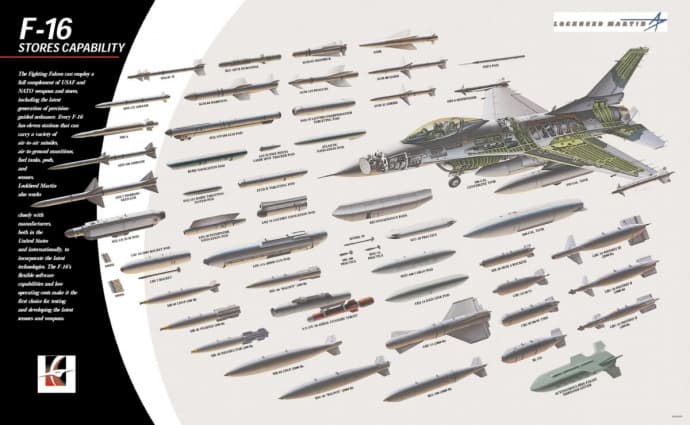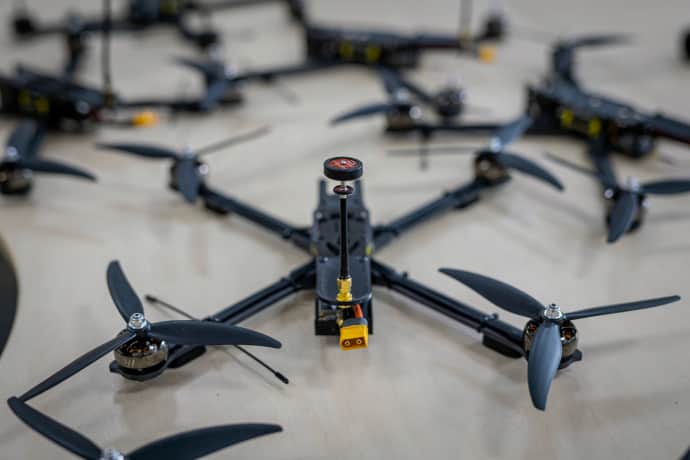Landmines everywhere and lack of aircraft, artillery and experienced commanders are slowing down Ukrainian army's advance

"The Biden administration is worried that the offensive is falling behind schedule."
"The Bundeswehr points out shortcomings of the Ukrainian offensive."
"US intelligence believes Ukraine’s Armed Forces will not achieve the key goal of the offensive this summer."
These are some of the quotes from respected Western media outlets about the actions of the Ukrainian Defence Forces in the widely publicised offensive (often referred to as a counteroffensive) that began in June.
As Ukrainian experts are saying, the assessments of some foreign politicians and media are rather simplified and based on the fact that Western experts are looking at the situation based on the standards of their own armies and much less intense combat actions.
Ukrainska Pravda investigated the actual pace of the Ukrainian offensive, what is preventing it from accelerating and what problems the large-scale operation in Ukraine’s south and east has revealed.
To prepare this article, Ukrainska Pravda spoke to several dozen military servicemen, experts and volunteers. Some of them agreed to be recorded, while others expressed their opinions off the record.
Situation on the fronts where the Defence Forces are advancing (as of early September 2023):
- The Tavriia front (offensive started in June). Ukrainian troops are facing difficulties but still breaking through to the main fortified Russian defence line, the so-called Surovikin line, at two points at once: near Velyka Novosilka and near recently liberated Robotyne [Sergei Surovikin was a commander of Russian forces in Ukraine from October 2022 to January 2023 and a commander of the Russian Aerospace Forces – ed.].
Seven villages near Velyka Novosilka along the Mokri Yaly River have been liberated, 10 kilometres deep into Russian defences. However, as Brigadier General Oleksandr Tarnavskyi, Commander of the Tavriia Operational and Strategic Group of Forces, recently said, the offensive near Velyka Novosilka, which could potentially lead to a move towards Mariupol, was just a distraction.
Military experts are stating that the main point of attack for the Defence Forces on the Tavriia front will be Melitopol or Berdiansk. This will help "cut" the logistical connection between Crimea and Russia through the occupied territories.
- The Bakhmut front (offensive started in May). Over the four months of offensive operations, the Defence Forces have advanced by 4-6 kilometres on the southern flank and in some places by 2-3 kilometres on the northern flank.
In the south, Ukrainian troops have crossed the Siverskyi Donets-Donbas canal, but have not yet been able to liberate the key villages on this flank, which are Klishchiivka and Kurdiumivka. Objectively speaking, there is still a lot of work to be done to reach the ultimate goal of the offensive, namely the encirclement of Bakhmut.
- The Kherson front (periodic reconnaissance and sabotage activities are taking place). The offensive in Kherson Oblast is quite specific, so it is difficult to measure its scale. Since it is currently impossible to throw a pontoon crossing across the Dnipro River and maintain logistics on the occupied bank, the Defence Forces are operating mainly in the format of ambushes, sabotage and attacks on Russian strongholds.
Ukrainska Pravda has obtained information that the Defence Forces have been moving towards the occupied bank since at least March 2023. On 29 August, it was reported that the military had symbolically raised the Ukrainian flag in the dacha area located on the other side of the Antonivka Road Bridge [a dacha is cottage-like building on a piece of land used as an allotment – ed.].
Russia's preparation: mines, terrain and trenches
Perhaps the only thing on which both Western analysts and Ukrainian military agree is that the main difficulty of this wave of offensive for the Defence Forces is overcoming minefields. As experts pointed out in a conversation with Ukrainska Pravda, sometimes mines are laid at a distance of 50-60 centimetres from each other.
"The enemy has a huge number of mines. There are places where there are a dozen mines of various types per square metre. And in the current green [summer – ed.] conditions, they are not visible," Robert Brovdi, who goes by the alias Madiar and is a company commander of an attack UAV unit, told Ukrainska Pravda.Frontline.
One module of the Russian universal minelayer (UMZ, remote mine-laying vehicle) can carry from 30 to 120 anti-tank mines or up to 2,100 Lepestok-type land mines. There can be six such modules in a UMZ. Therefore, the minefield laid by one vehicle can be up to 30 metres wide and 5 kilometres long.
Ukrainian soldiers faced this problem most acutely on the main offensive front, which is the Tavriia front, that is, in Zaporizhzhia Oblast and part of Donetsk Oblast. There, the Russians had a year and a half to prepare for a Ukrainian offensive.
"Even experienced soldiers are now saying that there are an unrealistic number of mines in front of us, and moving through a mined area is a very slow process. A group is sent out, and everything starts working on it – from machine guns to mortars, artillery, kamikaze drones... And there are two options: either you work quickly and rely on luck, or you do everything slowly, but risk not reaching the enemy's position because the group will simply be destroyed.
However, given our success near Robotyne, I believe that soon we will be able to accelerate the pace of the offensive a little bit. We have managed to break through the main minefields and defensive lines on this front," Ihor Hanenko, commander of the 47th Magura Brigade's mechanised unit, told Ukrainska Pravda.
What is important is that the Russians are not just densely laying mines everywhere, they are also doing it quite competently. The mines are laid out in such a way that after a small advance, Ukrainian forces will remain in the most exposed area and will be accessible to strikes by anti-tank weapons or artillery.
"They are also digging very narrow and deep trenches, three metres deep. This is done to ensure that even two people who do not know how a trench is constructed cannot miss each other during an assault. Then, for example, if there is the first strike and a man is wounded, then that's it, the group is just stuck in this trench," Hanenko said.
The Ukrainian Armed Forces also receives information about active mine-laying by the Russians from the Bakhmut front and from Kherson Oblast. Retreating near Bakhmut, the Russians move a few kilometres away from the line of contact, where combat actions are taking place, and create minefields again. In Kherson Oblast, they are laying mines at river mouths and the occupied bank of the Dnipro River, where Ukrainian troops have been landing for months.
Lack of weapons and personnel training
In light of the previous section, Ukraine desperately needs lots of mine clearance equipment. Oleksii Reznikov, Ukraine's former Defence Minister, has stressed this in an interview with The Guardian.
"Russian minefields are a serious obstacle for our troops, but not insurmountable. We have skilled sappers and modern equipment, but they are extremely insufficient for the front that stretches hundreds of kilometres in the east and south of Ukraine," Reznikov emphasised.
At the same time, as Western media reported, on the eve of the offensive, Ukraine had received less than 15% of all the mine clearance and engineering equipment it had requested from its Western partners. First and foremost, this refers to such engineering equipment as mine rollers, the supply of which, fortunately, has been unblocked by Ukraine's international partners.
Mine clearance is a rather sensitive topic. The Russians know that Ukraine is short of the necessary gear, so they specifically prey on any vehicles appearing on the battlefield. As a result, the Ukrainian military often has to carry out mine clearance manually.
For this reason, Ukraine needs more foreign-trained sappers.
"Sappers are needed here and now. Their work saves lives and ensures the advancement of our troops," Reznikov stressed.
The second particularly acute and obvious challenge to the Ukrainian offensive is the extremely small arsenal of aircraft and air defence assets.
"In July and August, the Western media spread the artificially inflated idea that we are fighting following a Soviet doctrine rather than a Western one. We are fighting as we see fit and as is technically possible. No US doctrine could cope with our war, at least because we do not have aircraft," Andrii Zahorodniuk, Chairman of the Board of the Defence Strategy Centre, former Ukraine's Defence Minister (2019-2020), said in an interview with UP.
As Western experts and experienced Ukrainian military officers told UP, given the resources available to Ukraine, no NATO country would dare to conduct such large-scale offensive operations as the Ukrainian Defence Forces are undertaking. Especially in a climate where extensive Russian air defence forces are hindering Ukrainian aircraft, which currently cannot boast any significant strength.
The Ukrainian Defence Forces have extremely limited potential to break down Russian fortifications from the air and provide substantial air support to the ground forces without parity in the skies. On the other hand, the Russians do enjoy this advantage, and they are exercising it to the fullest by launching strikes against the Ukrainians.
The issue of supplying Ukraine with F-16s has finally been unblocked, which is undoubtedly fortunate. However, we should bear in mind that firstly, Western aircraft, under the most optimistic forecasts, may only appear in Ukrainian skies in spring. Secondly, fighter jets alone are not a Wunderwaffe since what matters is the arsenal of weapons that will be supplied along with the aircraft.
Artillery and ammunition also remain an urgent need for Ukraine. The scope of the deficit is certainly nothing compared to last summer when Ukraine was retreating from Luhansk Oblast as it could not respond to Russian fire, but the need is nevertheless there. Ukrainian artillerymen have more precise systems and ammunition than the Russians, but their numbers are far less.
"The Russians still do not have a significant shortage of ammunition. True, compared to the previous phases of the war, the ammunition stocks have shrunk somewhat since we are blowing up their ammunition storage points and disrupting their logistics. But it's still not a shortage. They are aware of their advantage and build their tactics around artillery," says Petro Kuzyk, commander of the Svoboda battalion, comparing the intensity of last year's Russian artillery activity in the city of Sievierodonetsk with the current one in the area of the city of Bakhmut.
Besides the lack of warplanes and artillery, Ukrainian forces in Kherson Oblast face another obstacle - the shortage of a river fleet, Andrii Diachenko, Chief of Staff of the Lubart Special Forces unit, tells UP. Instead of armed boats suitably adapted to the war's challenges, the units use inflatable vessels, which they manage to get through volunteers.
"Of course, we would like to have floating tanks and armoured personnel carriers," says Diachenko, half-jokingly, "but we understand that we don't have enough tanks even for a land offensive. So, we need at least some boats."
Drones and electronic warfare systems
Ukraine was initially ahead of the curve in terms of using First-Person View (FPV) drones compared to the Russians. However, Russia quickly retooled and significantly expanded its production, which caused Ukrainian volunteers to sound the alarm.
"It's enough to imagine a situation where soldiers of two armies are entrenched in two foxholes near each other. You may send people to attack the hostile forces, and machine guns will target them as they run across the field. Or you might want to launch an FPV drone for mopping up [the adversary forces] before the attack and save a good part of your soldiers for the sake of US$400," Mariia Berlinska, Head of the Aerial Reconnaissance Support Centre, told UP.
Berlinska estimates that the Russians have reached a monthly production of 45-50,000 FPV drones, while Ukraine's pace is still inferior. Apart from the drones themselves, munitions for them should also be considered.
"The side with more attack drones of different types and classes will be victorious. No matter how much equipment we have on the ground or how much our Western partners give us. Tanks that take months to manufacture and cost millions of dollars are burned in seconds by a drone that costs a few hundred bucks," Berlinska emphasises.
Aerial reconnaissance troops whom \UP interviewed say they face a shortage of not only kamikaze drones but also other UAVs. The government could have solved the supply problem earlier, but it "slept through" the issue, waking up only in recent months.
"We are still flying Mavic-3s, which we are looking for all over the world and for which we are chipping in with our own money. We have been asking for a year now to have a UAV crew in each company, but we don't have them. And this is while all actions are being carried out under the cover of UAVs.
And what about the p*dars [literally fag*ts, as the Ukrainian soldiers refer to the Russian troops in everyday battlefield conditions]? They're doing well - they have Orlans [UAVs] flying around that we can't do anything about, and Lancets wiping out our equipment. That's why it's probably us who are the laptenogiye [as stereotypical Russians are referred to - ed.], the ones with the balalaikas, bears and vodka. We had only just started using FPVs, and the p*dars saw how cool and effective it was. That's it, they have put it into production. We have all this put on the shoulders of volunteers," one of the assault troopers from the Bakhmut front tells UP emotionally.
The Ukrainian soldiers have also pointed out that the Russians have highly efficient electronic warfare systems that effectively suppress the activities of Ukrainian drones.
Furthermore, Russian electronic warfare forces significantly obstruct the interaction between Ukrainian units on the contact line, affecting the means of communication between brigades on the battlefield.
Effectiveness of newly formed units
In the wake of the counteroffensive which has unfolded in 2023, Ukraine has been assembling at least two dozen newly formed brigades of the National Guard and the Armed Forces.
Nine units of the Offensive Guard, mechanised and artillery brigades, marines, assault forces, – everything was on the list. Despite the Offensive Guard receiving most of the media attention, the military command had their hopes pinned on the newly formed brigades of the Armed Forces.
The brigades of the Ukrainian Armed Forces had the opportunity to undergo military recruit training and specialised preparation abroad in order to later sit behind the wheel of the newly arrived German Leopards, British Challengers, American Paladin self-propelled guns, Bradley infantry fighting vehicles and Maxxpro armoured fighting vehicles.
Many in the ranks of the "old" brigades are of the opinion that perhaps instead of assembling new brigades, it might be better to create new battalions within existing ones. After all, these have established their rear, logistics, and connections with volunteers, as well as, quite importantly, mid-level officers that have undergone their baptism of fire in combat. This means there is a chance for competent management.
However, Ukrainska Pravda’s source in the General Staff emphasises that the use of newly formed brigades for the offensive is a traditional approach, as it is outlined in traditional military science. At the same time, he continues, the problem lies rather in the format of "express training" of the new Ukrainian soldiers.
"You have to understand that we did not have much time, so many units had to start operating virtually from the beginning. Under the circumstances, they are demonstrating rather good results," the source explains.
Entering the fourth month of the offensive, Ukrainska Pravda recorded drastically opposing views on the performance of the newly formed brigades at the front – both from the servicemen of these brigades and the units working alongside them.
Those recruits of the 43rd and 32nd mechanised brigades who underwent their military recruit training in Germany and now are on the defensive along the Kupiansk - Lyman line told us of their struggle with applying the knowledge gained abroad – it simply does not coincide with the realities on the ground.
In particular, during the exercises the infantry was assigned the role of those who mainly clean up the area previously cleared by aircraft and artillery, while on the Ukrainian front line those same soldiers are forced to carry out everything: keep the line, go on the offensive, and conduct mop-up operations.
Another problem in the training of recruits is associated with a lack of time for coordination directly in Ukraine. Usually, the military leadership explains this as a security factor, as the location of any training ground is known to the Russians, and in order to avoid additional losses, coordination takes place in the same "express format" or is carried out as a pure formality.
The soldiers also emphasise that recruits who have been trained abroad together often find themselves in different brigades. So they are virtually forced to establish new relationships all over again.
The commander of one of the intelligence units, who is currently working with the 43rd brigade, also adds that sending newly mobilised men for training abroad is a dubious idea: "These people do not yet understand the value of the knowledge that they are taught."
Another problem faced by the newly formed brigades and from which they themselves suffer is the lack of well-trained mid-level commanders. Firstly, they are quite literally lacking in numbers – like ordinary soldiers, they are killed and injured. Secondly, these positions are often taken by newbies – graduates of university military faculties without combat experience.
"I consider this a crime against military personnel. After all, people who were just going to evade conscription into the army and have no experience become at the very least company commanders [these have about 80 people in subordination - ed.]. They do not know what to do with that company, how to train it, manage it, bring it to combat. As a result, there is zero planning and zero support of personnel," says with visible anger the above-mentioned scout who is now fighting on the Bakhmut front and periodically trains soldiers of the newly created brigades.
While working on infantry positions on the Kupiansk - Lyman line, journalists from Ukrainska Pravda stumbled upon several fighters from the 43rd New Mechanised Brigade: two of them had no connection with their unit, several more waited more than a day for evacuation from their positions under Russian attacks. So they lost one of their two rest days before returning to their positions.
Every underprepared fighter on the ground, or worse, an unskilled commander, is a risk not only for their own unit, but for everyone who works alongside them.
Problems with tourniquets and protracted evacuation from the battlefield
Among the things that are slowing down the Ukrainian offensive, it is also important to highlight the problems of tactical medicine, to which Ukrainska Pravda has devoted more than one article over the past few months.
Unfortunately, the first-aid kits of Ukrainian servicemen still contain Chinese tourniquets and poor-quality occlusive dressings, which significantly reduce the likelihood of survival of the soldiers.
None of the public scandals concerning the command of the Medical Forces has led to significant changes in supplies for military and combat doctors. Although some teams, according to what volunteers told Ukrainska Pravda, now receive high-quality American CAT and SOFT-T tourniquets in addition to Chinese ones.
The issue of evacuation from the battlefield deserves special attention in the context of the offensive, as it is considerably hampered by the lack of pickups equipped for evacuation of the wounded, medical armour, and, of course, the lack of manoeuvrability on the ground.
The provision of professional medical care during the "golden hour," despite the optimistic statements of Deputy Minister of Defence Hanna Maliar, is a miracle [the golden hour is a concept in military medicine, which entails that if medical care is provided within the first hour after being wounded, it will save the lives of 90% of injured soldiers - ed.]. Even taking two hours to remove the wounded soldier from the battlefield to the stabilisation point in the last months of the offensive was quite rare, volunteer Oksana Korchynska, who until recently worked at the frontline stabilisation point between Zaporizhzhia and Donetsk Oblast, tells Ukrainska Pravda.
"For the last month and a half, evacuation to our stabilisation point could take from 2 to 21 hours. Because on our front, the soldiers are forced to go across minefields and it so happens that sometimes they cannot carry the wounded out of there for a long time," says Oksana.
***
Many military experts are saying that the Ukrainian Defence Forces still have at least two months to achieve significant results in the liberation of the occupied territories in this phase of the war.
One of the factors is the weather, which can considerably affect the actions of both sides. With the onset of autumn rains and impassable unpaved roads, any combat missions become much more difficult because of the inability to use armoured vehicles.
As for the pace of the Ukrainian Armed Forces' offensive, no premature conclusions should be drawn, but the full range of difficulties faced by the Ukrainian military needs to be taken into account.
Like Andrii Zahorodniuk, Chairman of the Board of the Centre for Defence Strategies and former Minister of Defence, has said, no one can estimate the pace of the offensive because there is nothing to compare it to.
"If someone has drawn a schedule for the offensive, it is purely theoretical. As all generals know, no war goes according to plan. The offensive is not fast or slow – it goes as it can go. The leadership of the Armed Forces is not wasting time, it is the only thing they live for," Zahorodniuk sums up.
Olha Kyrylenko, Yevhen Buderatskyi, Ukrainska Pravda
Translation: Myroslava Zavadska, Artem Yakymyshyn and Theodore Holmes
Editing: Susan McDonald
